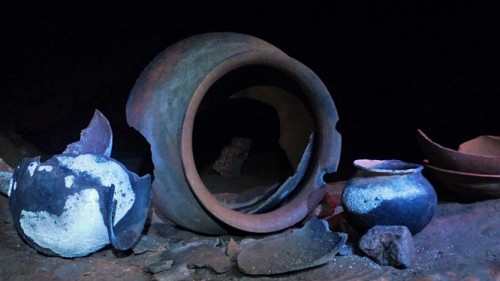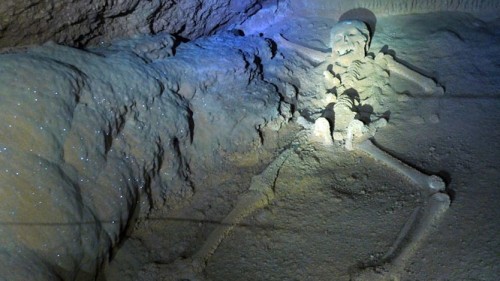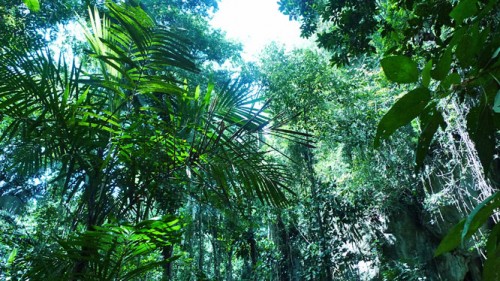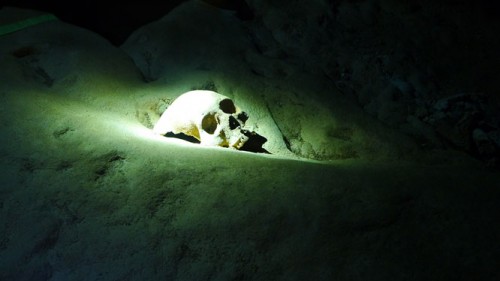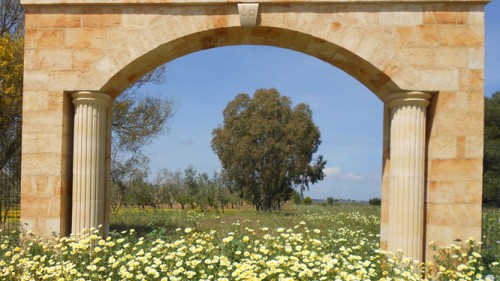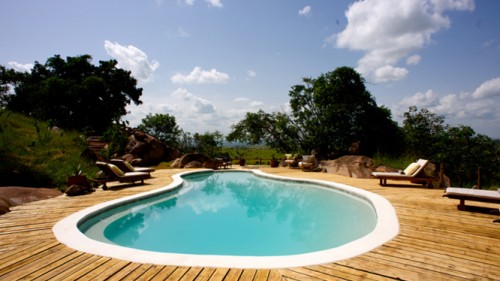Journey to the Underworld
Our tour guide points out the window toward a smooth-barked tree towering in the distance. “A ceiba tree, sacred to the ancient Mayans, was believed to be a bridge between the planes of existence: heaven, earth, and Xibalba, ‘place of fright’, where we are going today.”
Actun Tunichil Muknal, or the the ATM caves, are an archaeologist’s dream and an adventurous tourist’s fantasy (though they unfortunately dispense no cash). Hidden deep in the Belizean jungles of the Cayo District near the town of San Ignacio, the three mile network of caves is a recently discovered historical marvel containing a spectacular collection of otherworldly pre-classical Mayan treasures. Scattered throughout the massive ‘cathedral’ chamber, dozens of pieces of pottery, ceramics and skeletal remains lay untouched in their original resting place, telling stories of Mayan ritual sacrifices performed to appease the gods who were believed to inhabit this damp, dark, subterranean world.
These artifacts take a certain physical toll to be seen. After a breathtaking, albeit bumpy ride through the foothills of the Tapir Mountains, we loaded our packs with water, lunches and extra clothes, and trekked through the jungle for nearly an hour on a narrow footpath, forging the frigid river leading the to cave mouth four times with packs and shoes above our heads. Psychologically, I passed a test of courage as well, as I was shyly greeted by a slow slithering serpent in the underbrush a few feet from the footpath while lagging behind to take photos. The snake was later identified by the guide as a viper, the most dangerous in jungle. ‘Place of fright’ indeed.
Stripping down to our bathing suits with clothes and cameras safely stored in dry bags, we dove into the aquamarine pool that poured out of the cave mouth and swam into the darkness. After over an hour of swimming, climbing, wading, shivering and smiling, our headlamps shone across the limestone walls of the cathedral. With shimmering crystalline stalactite and stalagmite columns, natural vaulted arches and frescoes of rippling red limestone patterns, a sense of divine power hung in the air like the molecules of water illuminated by the lamplight.
We removed our shoes in respect, and because underfoot lay what we had ventured since dawn to find: pottery, ceramics and skulls, infinitely valuable and immensely fragile, veiled in darkness. The little girl in me, who had spent endless hours pouring through the musty pages of her grandfather’s old National Geographic magazines, couldn’t help but gasp. No glass cases to hide or obscure the earthenware pottery broken ceremonially with ‘kill holes’ to release the spirit of the vessel. No bright museum spotlights to reveal each crack and chip in the skulls of those ‘lucky’ enough to be sacrificed to appease their gods. Forget MGM studios, this is as close to Indiana Jones as you can get.
According to Mayan mythology, Xibalba contains numerous houses, through which one’s soul must face tests of courage, wit and strength to reascend to the upper realms. You may be challenged to endure darkness, tame blades or face bats and jaguars. To see the Mayan artifacts of the ATM caves, you may just have to pass a few of these tests yourself. Trust that if you do, you will be allowed to leave as promised.
In the time since Mara Munro visited the ATM caves, a clumsy tourist dropped a camera, breaking a section of one of the ancient skulls. As a result, cameras are no longer permitted in the caves—all the more reason to go see them for yourself.
